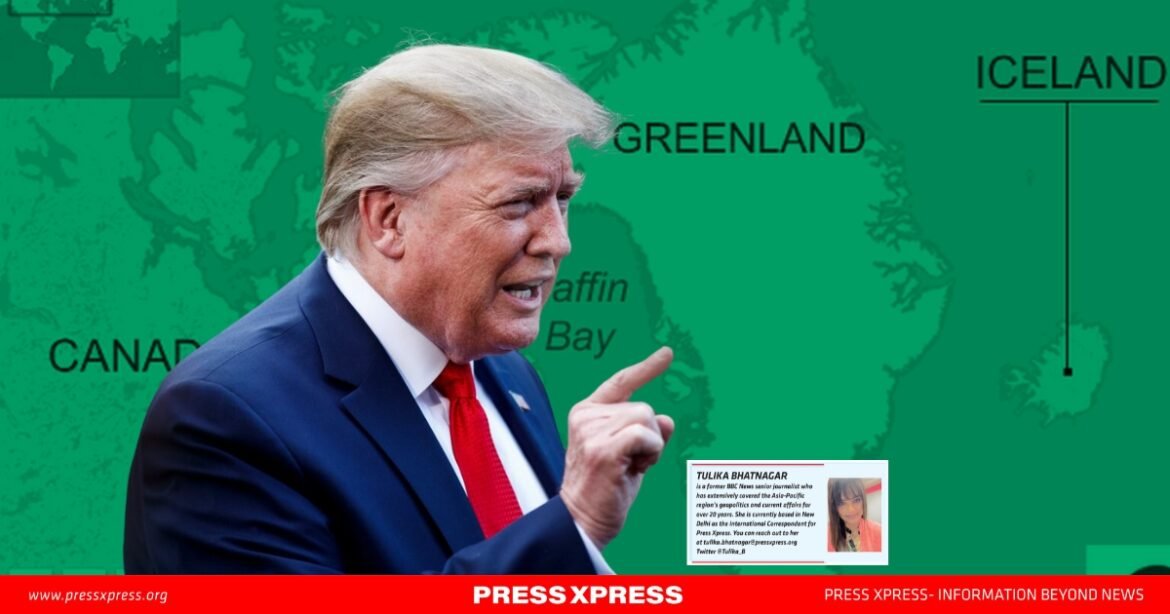Greenland, the world’s largest island, is often in the news for its rapid climate change.
But this time, the island is at the centre of a modern-day gold rush with its melting ice caps not only reshaping the physical landscape but also global geopolitics.
Recent statements by US President-elect Donald Trump have given a glimpse of what the future could hold for this highly strategic location, and why climate change remains at the heart of Trump’s bid to buy Greenland.
Greenland for sale
The idea of a country’s island up for sale feels preposterous. Yet, it’s not the first time this proposal has been floated.
Trump first proposed the idea in 2019 calling it a “large real estate deal”. Then, in December last year, he revived calls made in his first presidency for US ownership of Greenland, calling it an “absolute necessity”.
He also emphasized that this “sale” was vital for US security.
Even before Trump, the US is said to have considered, and made several attempts, to purchase Greenland from Denmark. Greenland is an autonomous territory within the Kingdom of Denmark. The US has a military base there, called the Pituffik (Thule) Space Base.
In 2019, when Trump made a public announcement regarding intention to buy Greenland, the purchase price was estimated at a value close to $50 billion.
In 2025, this deal could be anywhere close to $1 trillion, according to various estimates, making it the “deal of the century”.
Climate change at the heart
Greenland is strategically located in the North Atlantic Ocean, and lies between the US and Europe. Two-thirds of the world’s largest island lies above the Arctic Circle and is known for its immense glaciers.
The Arctic climate sustains the island’s massive ice sheet, the second largest in the world stretching over 2,400 km from north to south and is nearly 1,524 m thick in many places. This ice is melting as climate change accelerates, making the Arctic a centre of global attention.
As Arctic ice melts, the region is opening up to new shipping routes. Already, the number of unique ships entering the Arctic increased by 37% between 2013 and 2023, according to the intergovernmental Arctic Council.
“As the climate gets warmer, the Arctic is going to be a pathway that maybe cuts down on the usage of the Panama canal,” according to Robert O’Brien, Trump’s former national security adviser, as quoted in The Guardian.
Alice Hill, former climate adviser to Barack Obama also told The Guardian that losing massive amounts of ice has made Greenland “more attractive for rare earth mining and oil drilling”.
Both statements are significant. The new maritime routes will emerge once the ice melts away, with the potential to revolutionize global shipping. In addition, the rich deposits of oil and gas, as well as rare earth metals will be high in demand. According to an assessment by US Geological Survey, Greenland “contains approximately 31,400 million barrels oil equivalent (MMBOE) of oil” and nearly 148 trillion cubic feet of natural gas.
“That’s the kind of reserves that if they were discovered in Saudi Arabia or Qatar, businesses would be jumping for joy,” said Ajay Parmar, a senior crude markets analyst with commodities intelligence firm ICIS, in an article published in Politico.
“Climate change is affecting everything in Greenland, we are seeing land becoming exposed and also new species in the sea,” according to Chemnitz Larsen, a local who supports Greenland’s independence from Denmark. She said there is enthusiasm for new economic opportunities, such as tourism and even rare earth mining, to diversify from traditional practices such as fishing but the climate crisis remains a stark reality. “For us, climate change is real, there’s no doubt that it’s here and will become more difficult for us in time,” she said.


